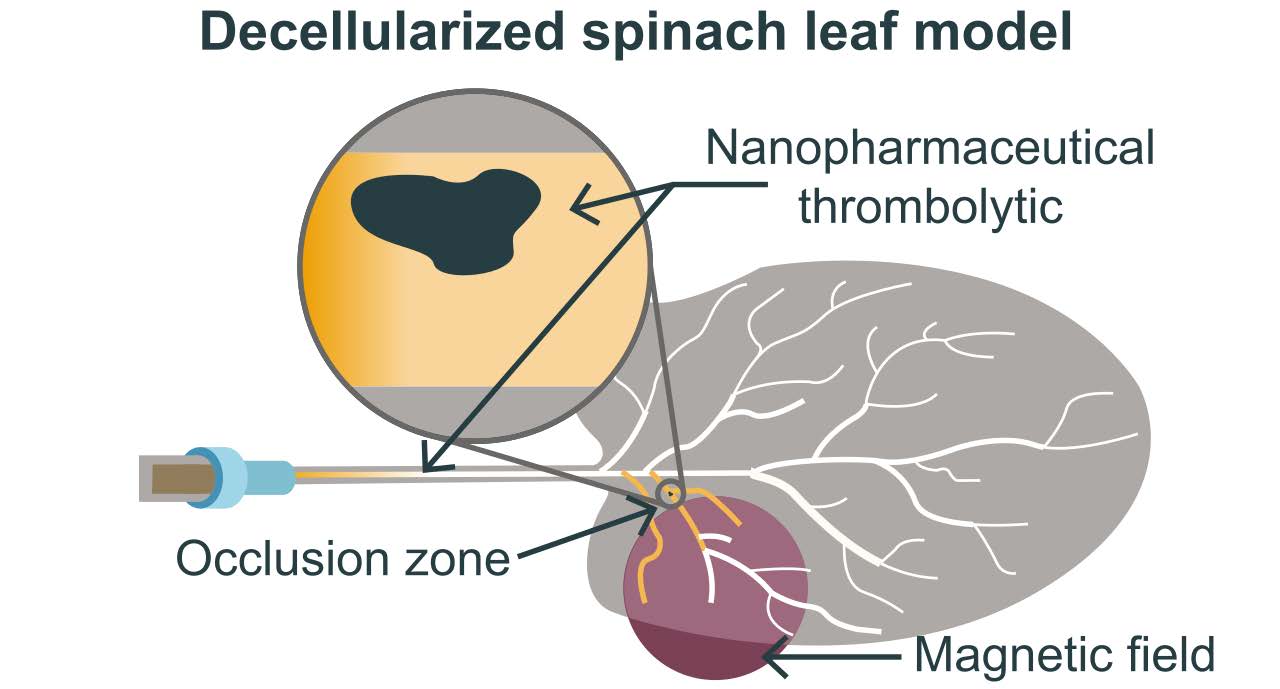Авторы: , Прилепский А.Ю., Вероника Бермудес, Виноградов В.В.

Nano Letters, 2021, DOI: 10.1021/acs.nanolett.1c01920
Abstract
Animal testing is often criticized due to ethical issues and complicated translation of the results obtained to the clinical stage of drug development. Existing alternative models for nanopharmaceutical testing still have many limitations and do not significantly decrease the number of animals used. We propose a simple, bioinspired in vitro model for nanopharmaceutical drug testing based on the decellularized spinach leaf’s vasculature. This system is similar to human arterioles and capillaries in terms of diameter (300–10 μm) and branching. The model has proven its suitability to access the maneuverability of magnetic nanoparticles, particularly those composed of Fe3O4. Moreover, the thrombosis has been recreated in the model’s vasculature. We have tested and compared the effects of both a single-chain urokinase plasminogen activator (scuPA) and a magnetically controlled nanocomposite prepared by heparin-mediated cross-linking of scuPA with Fe3O4 nanoparticles. Compositions were tested both in static and flow conditions.
DOI: 10.1021/acs.nanolett.1c01920
Read Full: